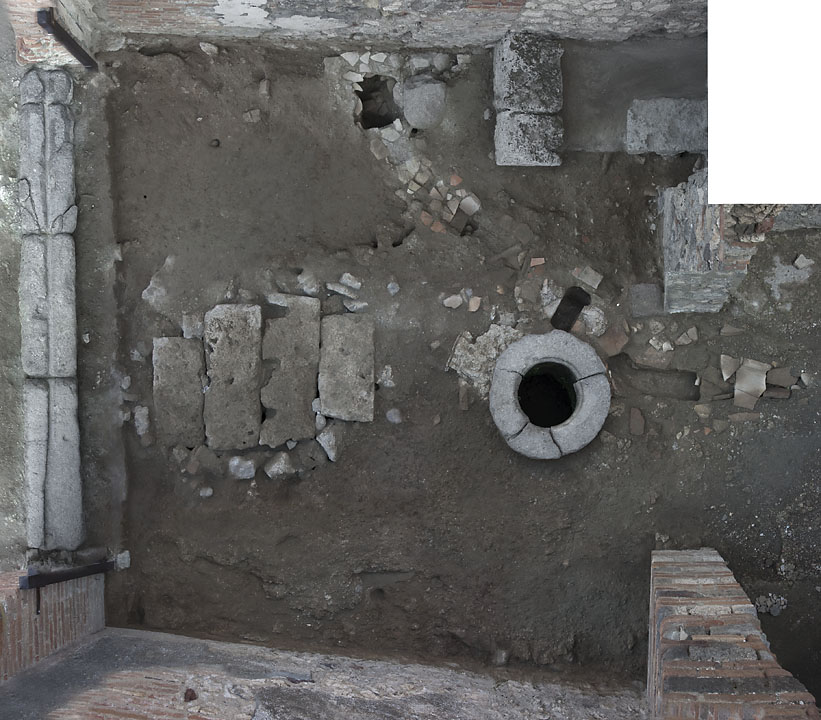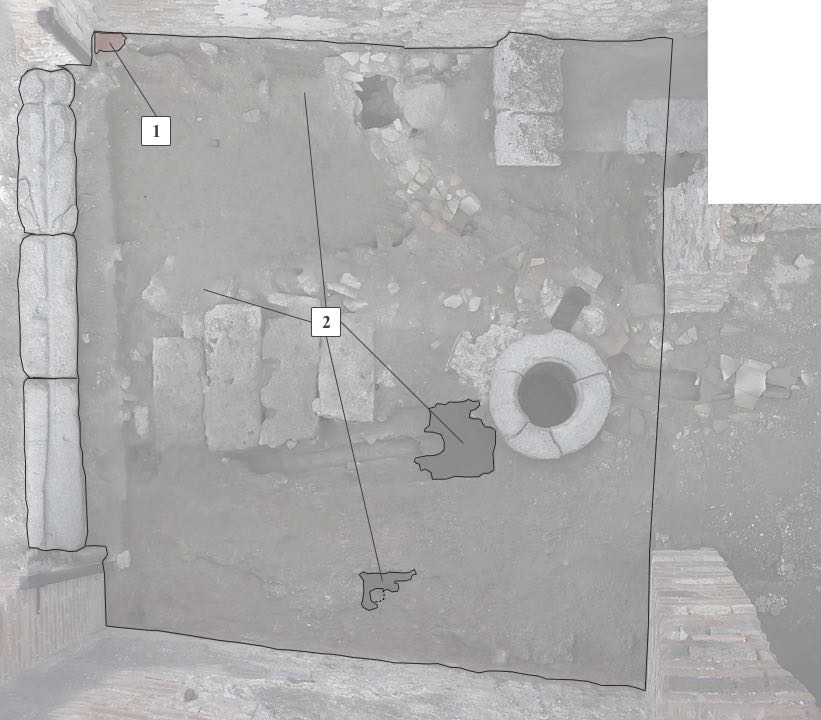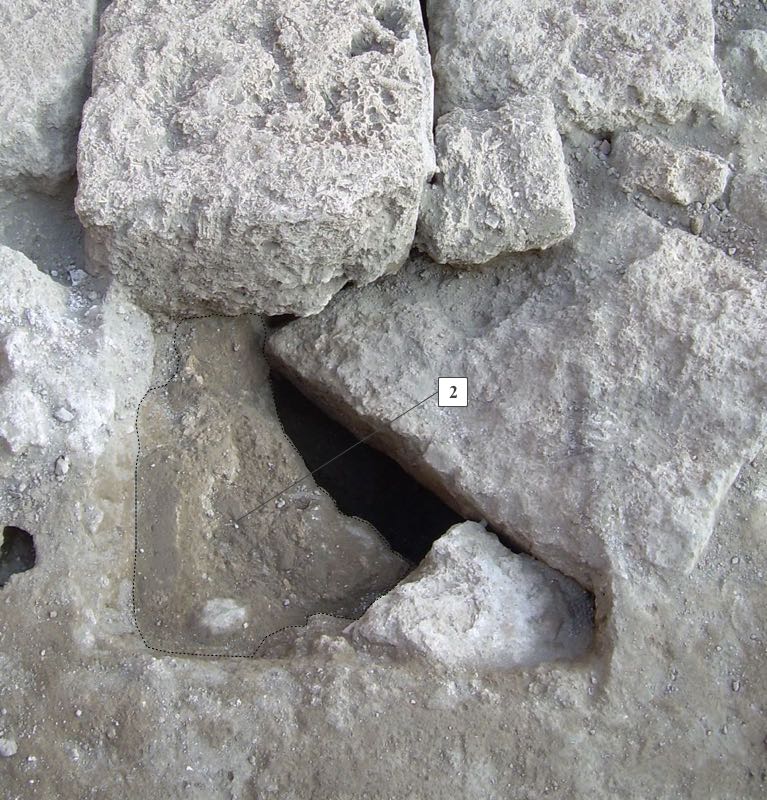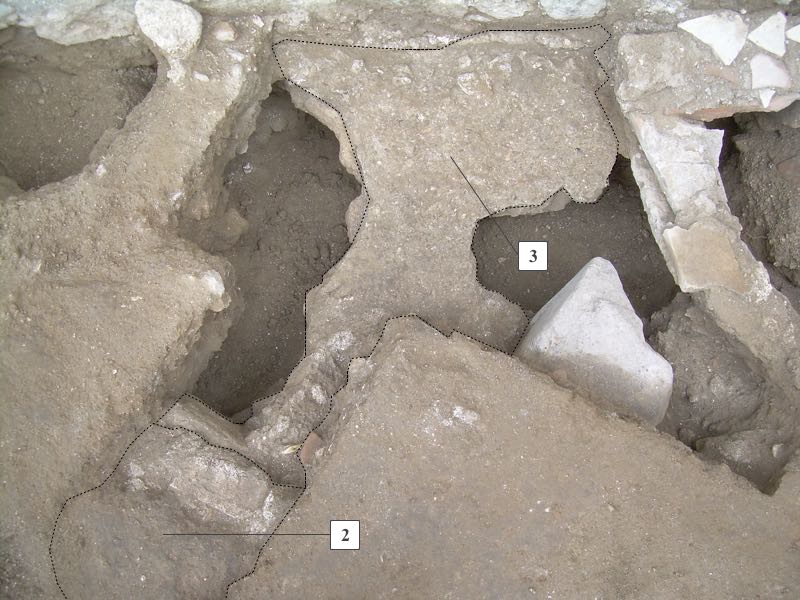Floor
Description
Mats Holmlund
The floor of 79 AD is almost completely missing from the room and the only remaining part of it is located in the northwestern corner of the room. The remnant indicates that the floor originally was made of cocciopesto. There are some traces of the subsurface of the floor and there are also remains of at least two earlier floor levels in the room.
Directly beneath the first floor level of 79 there is a layer of rubble that covers most of the room. The rubble consists of ash, pieces of plaster, plaster coating, terra cotta, lava stone, limestone and cruma. The thickness of the layer varies between approximately 0.05 and 0.25 m.
The second floor level consists of a cocciopesto floor that is visible in four separate areas of the room. First there is a remnant circa 0.40 m from the south wall and 1.60 m from the east wall. The area measures circa 0.40 x 0.20 m and there is a hole cut in it. The diameter of the hole is 0.10 m and is circa 0.10 m deep. The floor is about 0.05 m thick in this area. The second area of the second floor level is located at the mouth of the cistern. It was cut through (or had already disappeared/was already broken) when the cistern was reconstructed and when the four limestone blocks were put in place above the old cistern. The third area is located at the rim of the mouth of the old cistern. The fourth area is located at the north wall circa 1.00 m from the western corner of the room and it stretches up until the place where the drain goes through the north wall. This part of the floor has partly collapsed and there is a void beneath it.
The third floor level is only visible by the north wall, where it is directly superseded by the fourth instance of the second floor level. The third floor level is also a cocciopesto floor with reddish polish. It is circa 0.06 m thick.




